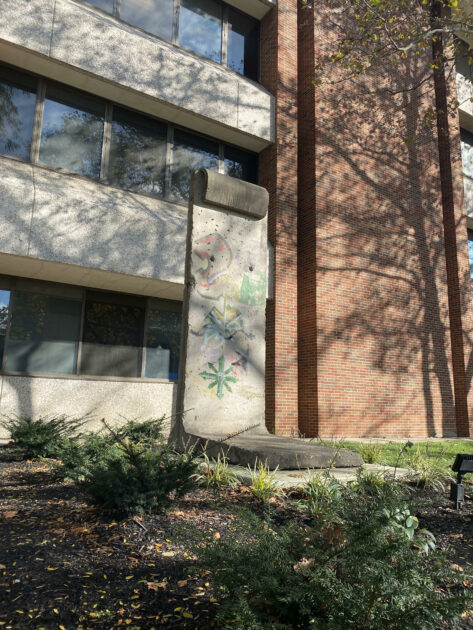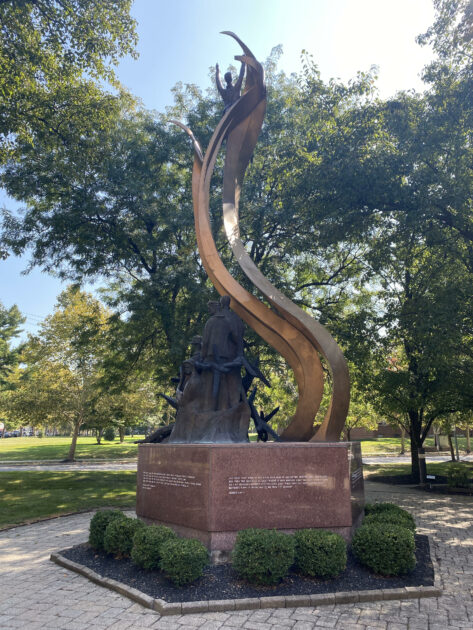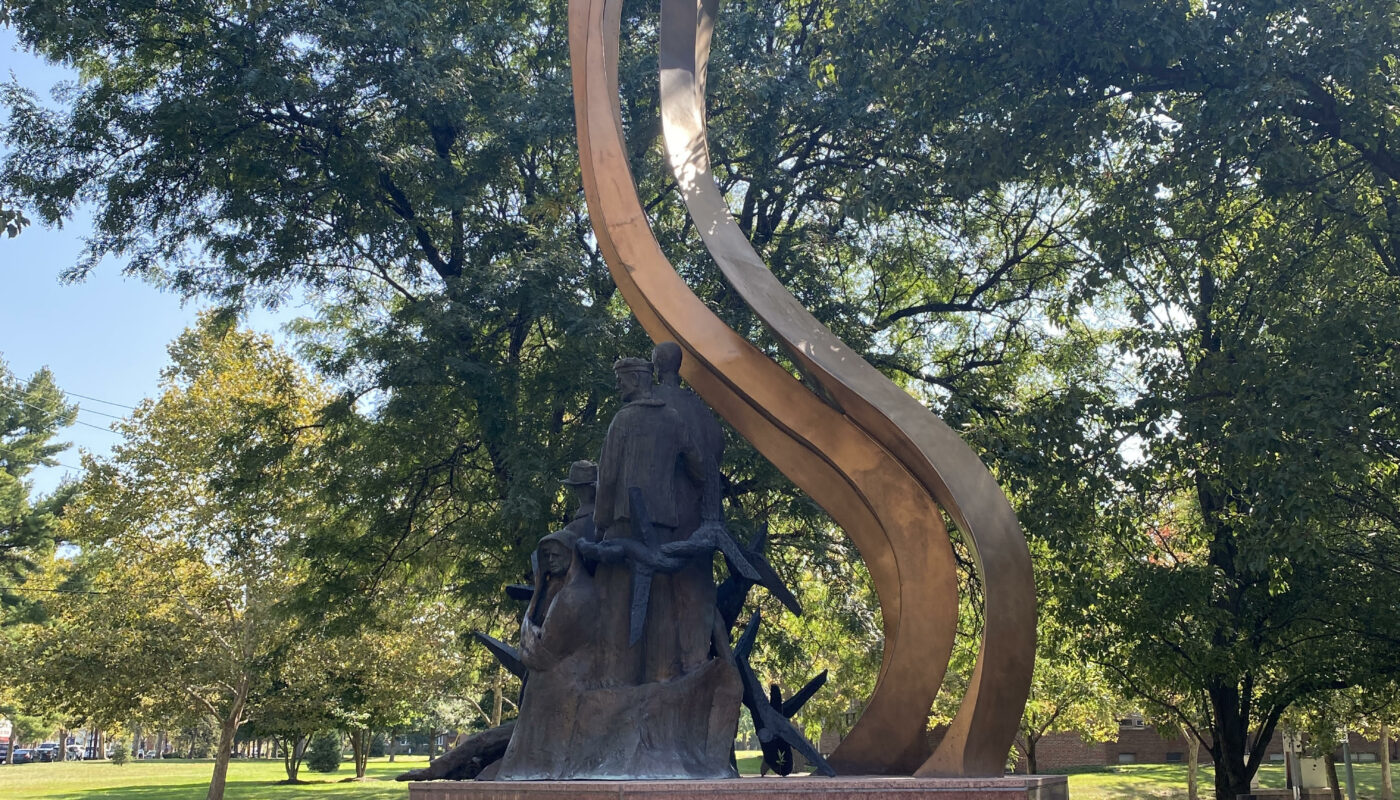A large piece of university and seminary history is embedded within several large sculptures and art pieces scattered across the campus grounds.
While most may not immediately recognize the significance of these sculptures upon first glance, they hold immense value to both the university and its Lutheran heritage.
- The Berlin Wall

The Berlin Wall is possibly the most well-known sculpture at the university. Part of the Cold War-era divide between the Allied West Berlin and Soviet-controlled East Berlin, the 96 mile-long wall stood as a potent symbol of both subjugation and resistance; a symbol of “freedom over tyranny.”
In 1992, the university received a large portion of the Berlin Wall that was exhibited as a part of the Ameriflora Exhibit from Franklin Park in Columbus, according to a January 1992 issue of the Chimes.
The piece now stands permanently at the university through Hansa Consulting, GmbH, a German-based company. At the time, the company said it had many options for the placement of the wall, but landed at the university for a few reasons.
“We chose Capital because of its German heritage and the educational setting that the university provides,” Jerry Sellman, the corporation’s representative in the United States, said in an interview with the Chimes at the time. “In addition, at Capital, it will be accessible to the widest possible audience.”
Originally standing in the lobby of Blackmore Library, the nearly 3-ton segment of the wall was later moved to a secluded courtyard behind Huber-Spielman Hall for preservation reasons. Last year, the wall was moved once more, and now stands by the entrance to Blackmore, displaying its graffiti and bullet holes for all to see.
- Promise for Life

The Promise for Life sculpture stands on the corner of Main Street and College Avenue, at the western half of Trinity Lutheran Seminary.
This sculpture was erected in 1999 by Alfred Tibor, a Holocaust survivor and famed sculptor who made Columbus a focal point for his art. According to the seminary’s website, “those involved [with the project] requested it be a “living” sculpture. They wanted it to be more than a monument; it must be a stimulus and inspiration for interfaith dialogue.”
The sculpture features a massive bronze flame rising through and above a huddled group of people surrounded by barbed wire. At the top of the flame stands a mother and father lifting up their newborn child.
According to Tibor, the sculpture is meant as an expression of how God confronts and deals with our sin and our hope for life: “Out of the flames of human hate come the ashes of death. Out of the flame of God’s love comes the promise for life.” This theme is engraved on the base of the sculpture.
“Although I survived my imprisonment by hating, once I was freed I knew I would have to give up hating,” said Tibor in a statement to Trinity. “I want coming generations to understand the concept of brotherhood and give up hate and destruction. We must honor and love each other.”
- Christ the Teacher

In November 1978, the Hamma Theological Seminary, based in Springfield, and the Evangelical Lutheran Theological Seminary (ELTS), the original seminary on which the university was founded, merged into Trinity. In 1988, a sculpture was commissioned to be built to commemorate the 10-year anniversary of the merger by artist William Schickel, whose artwork decorates Hamma Library.
“In 1988 Trinity celebrates its Tenth Anniversary of preparing men and women for Christian ministry,” a brochure made at the time of the sculpture’s dedication said. “The story of Trinity Seminary is the story of a rich heritage of two former schools, in which capable faculties laid strong foundations for the eventual ministries of their students.”
The sculpture is composed of large limestone blocks, upon which are anodized aluminum images representing stories of the life and teachings of Jesus Christ, founded upon the biblical metaphor for Christians’ relationship with Christ as “living stones” (1 Peter 2:5). According to Elli Cucksey, the head librarian of Hamma Library, “it’s to honor the previous teachers and to recognize that that was also a role that Christ played as teacher.”
The sculpture still stands tall today in the aptly named “Christ the Teacher” courtyard, a reminder of both heritage and a founding faith.
Despite the significance of these powerful icons–and many more campus symbols–there is a severe disconnect between them and the student population, especially with seminary-related materials, and some don’t even know they are there.
“I would say most people outside of the seminary have no idea that they’re here or what they are,” said Cucksey. “I think there’s a perception of this building as a scary place for new students […] that is just not true. I would like to see that–recognize that–we say that we are rooted and open means we are rooted in our own tradition, but we are open to yours, whatever that might be.”

